“The Old Boss would never take wagons over such a d____d trail,” Orrin Porter Rockwell stated, looking at the narrow, rocky Weber Canyon.[1] A few days beforehand, on 10 July 1847, the Vanguard Pioneer Company of the Mormons was visited in the evening by a mountain man named Miles Goodyear. This man had established a small trading fort near Weber River known as Fort Buenaventura—the only permanent white settlement in the region the Mormons wished to migrate to. According to one journal:
His report of the valley is more favorable than some we have heard. He says the road is better to go by his place to the Salt Lake than it is to follow the Hastings route but we are some inclined to believe that he is anxious to have us make a road to his place through selfish motives. [2]
Although anticipating that Goodyear’s claims were biased (Mormon wagon trains passing his trading fort would make for good business), a small detachment of about 20 men, under Orson Pratt’s direction, were sent to investigate the route. According to John Brown, “Brother Pratt & myself who acted as pilots and pione[e]rs for the camp went down and examined the Canyon but did not find it practicable[.]”[3] As a result, the land now known as Ogden, Utah missed its chance to be either a major stop-off on the way to the Mormon capital in Salt Lake City or the capital itself.
In our own time, Ogden will have an open house in preparation for the rededication of the LDS temple there. With the rededication fast approaching, it is both enjoyable and informative to understand the history of this sacred structure.
A Tale of Two Tabernacles
To understand the temple, it is helpful to know the history of the land it stands on. Although the Weber River settlement did not become the central gathering point for Mormons, it was still one of the first regions settled after Salt Lake City. John Brown purchased Miles Goodyear’s land and improvements with Mormon Battalion money in November of 1847. Over the course of time, a series of forts built up in the region coalesced into the settlement known as Ogden. In 1855, Brigham Young commissioned William Nichol Fife and Walter Thompson to go to Ogden and build a Tabernacle for the saints of the area. It was the first large building constructed in Weber County, and was constructed with great sacrifice. One Danish immigrant recorded that “Here in this town we are building a tabernacle, and we are working out our tithing. This tabernacle will improve this city,” and noted in November of 1856 that: “The weather has been cold and snow has began to come in the mountains. I have worked most of the time on the tabernacle.”[4] William Fife—the architect—recorded that he received only about $100 and some foodstuffs for his labors.[5] Another resident, Chamberlain Critchlow, observed that:
The men worked hard and faithfully with food and clothing scarce. It was not uncommon for a man to work all day with only milk as food. Most of our clothes were so patched that you could hardly tell the original, and we wore homemade shoes that, when they became wet, they spread, and when dried they were so hard we could hardly get them on.[6]
Tabernacles, such as the Ogden Pioneer Tabernacle, were the second most significant buildings that graced Mormon settlements, and were far more widespread in construction and use than temples. The Ogden Tabernacle served as the center of the community and region. Even while under construction, it served as the drilling grounds for the Weber County Division of the Militia as they prepared for a possible confrontation with Johnson’s Army during the Utah War. After its dedication in 1859, the adobe and red-pine-wood building served many function in the community, including as a meeting hall for stake conferences and other religious meetings. One poem, celebrating a later tabernacle in Ogden, stated the importance the building and its plot—the Ogden Tabernacle Square—had to the community by calling it “our Town’s most sacred sod.”[7] It is probable that every president of the Church up through David O. McKay spoke in the tabernacle in addition to many other general authorities and auxiliary presidencies. Perhaps the most famous discourse given inside was Elder Melvin J. Ballard’s “Three Degrees of Glory” sermon given in the 1920s.
The building also served as the meeting place and performance hall for an Ogden Tabernacle Choir, spoken of by President Heber J. Grant in 1912 as one of “Utah’s two great musical organizations” alongside the Salt Lake Tabernacle Choir.[8] This group, organized by 1869 sung in the community and abroad until 1949. At its peak, the choir reached a membership of 250 singers—mostly volunteer amateur musicians—and traveled on a number of performance tours, including performances at the Lewis and Clark Exposition in Portland, Oregon, in 1905; the National Irrigation Conference, in 1907; the Panama Pacific Exposition in San Francisco in 1915; and the San Diego World’s Fair Exposition during that same tour. In 1923, the choir began a tradition that still remains a part of Ogden’s music life today—the annual singing of Handel’s Messiah. After the choir disbanded in 1949 the presentation became in part a community sing-along, with the audience participating in some of the parts.[9]
The pioneer tabernacle also served as the home of the Weber Stake Academy—now Weber State University—for a short stint in 1890. In February of 1890, the Stake Board of Education determined that the academy had outgrown the facilities available at the Second Ward Chapel where it had been meeting and decided to move it to the tabernacle. After some renovations, the Academy sessions opened in the tabernacle in April, but after two weeks, the question arose about whether it was legal to use the tabernacle for such purposes. At the time, under the provisions of federal antipolygamy legislation, particularly the Edmunds-Tucker Act of 1887 it was very possible that the building would be confiscated by the federal government if it were used for non-religious purposes. So, on May 2, 1890, the academy ended its month-long stay in the tabernacle.[10]
In order to continue to meet the needs of the growing community, the tabernacle was renovated in 1896, adding decoration to and improving the exterior and the interior. By the 1920s, however, more needed to be done—on May 9, 1921, George E. Browning of the Weber Stake presidency noted that he had good reason to believe that “the day was not far distant when a new tabernacle, [and] a temple… would be provided.”[11] Various efforts had been made to build a new tabernacle on the site in the 1880s and 1900s, but it would be a number of years before either of those came true. In 1953, construction began on a new tabernacle for the eleven stakes of the Church existing in Weber County. This newer building took after the style of some of the temples being built at that time—the London, England; Hamilton, New Zealand; and Bern, Switzerland temples—and stood as a grey, square building with a steeple and Central American-looking motifs decorating the façade. On 12 February 1956, the new tabernacle was dedicated by President David O. McKay—a Weber County native, then serving as president of the Church of Jesus Christ of Latter-day Saints. In the dedicatory prayer, President McKay asked the Lord that the building “truly radiate faith in Thee” and that, “Whenever people enter this building may they come in reverently. If any enter to scoff or to sneer, may they be so influenced as to remain to pray.”[12] This newer tabernacle was the last tabernacle ever constructed by the Mormons, as they switched to large church buildings known as stake centers to serve the same function at a lower cost. This second Ogden Tabernacle will continue to serve the Saints of Weber County after the renovations are complete.[13]
The old Pioneer Tabernacle remained on the Square for a number of years after the dedication of the newer structure, abandoned for a while and later serving as a branch genealogical library. Since the newer tabernacle effectively quadrupled the old tabernacle’s seating capacity of about 1000 people, however, the old tabernacle was largely rendered obsolete. With the construction of temple on the Tabernacle Square underway in 1971, the unanimous decision of the 26 stake presidents in Weber County was to raze the old tabernacle because of its “very apparent visual conflict with the temple now nearing completion.”[14] In a way, this decision, sad though it was to remove such a beautiful relic of the pioneer era reflects the subordination of the tabernacles to the temples in Mormon thought—a fact also demonstrated in the removal of the spire of the newer tabernacle in recent years to remove confusion as to which structure was more important.
The Temple
Writing in 1888, Elder B.H. Roberts of the Seventy stated that:
The innumerable millions who have died without a knowledge of Christ or of His Gospel, together with those who have been deceived by the teachings of pseudo ministers of Christ, are not eternally lost, but that, since the spirit of man when separate from the body retains all the faculties of mind, the Gospel is preached in the spirit-world to the disembodied spirits, and that on condition of their accepting the Gospel, and living according to the laws of God in the spirit, they may be saved on condition of the outward ordinances of the Gospel being administered vicariously for them upon the earth by their agents—their relations….
The Gospel of Christ is not limited in its powers to save to this life, or this world alone. Its power enters into the spirit-world. And by its proclamation in the world of spirits the fathers will learn that they are dependent upon the children still in this world for the performance of the outward ordinances of the Gospel; hence, their hearts will be turned to the children. The children on the earth will learn that it is within their power to attend to ordinances of the Gospel for their progenitors; hence, the hearts of the children will be turned to the fathers. It is because of this—because of the knowledge restored by Elijah, that the Latter-day Saints, wherever they have planted their feet, have sought, even in the days of their greatest poverty, to build a temple, the proper place in which to attend to these ordinances for the dead; and they thus witness to the world that the hearts of the children are turned to the fathers.[15]
Temples are the most sacred and important structure built by Mormons. At the time Elder Roberts wrote the above, three temples were operating in Utah, with a fourth—and most grand—to be dedicated in the Great Salt Lake City within the next few years. As a temple consciousness grew among the Mormons, and to meet the needs of the growing Church, more temples began to be constructed. As early as 1901, President Joseph F. Smith stated that: “I foresee the necessity arising for other temples or places consecrated to the Lord for the performance of the ordinances of God’s house, so that the people may have the benefits of the house of the Lord without having to travel hundreds of miles for that purpose.”[16] By 1930, three new temples had been constructed—all of them outside of Utah. All three of these temples—the Laie Hawaii, Cardston Alberta, and Mesa Arizona temples—not only broke ground in location, but in style and structure, preparing the way for further changes that would come in the Ogden and Provo temples. While the Utah Pioneer temples remind one of cathedrals or castles, the Cardston, Laie, and Mesa temples are more reminiscent of the architecture of Frank Lloyd Wright with elements of ancient American ruins.
As can be expected, change did not always come easily. One Church periodical reported that “when the Saints, both in Utah and Hawaii, learned of the architecture of the Hawaiian temple, many questions were asked concerning the architectural departure from the older temples. Some even wondered whether it was proper to establish a new type of temple architecture.” These objections would arise again with the construction of the Ogden and Provo temple a half-century later. To response to the criticism raised by the Saints over the new temple designs in 1916, President Samuel E. Woolley of the Hawaiian mission was invited to give a talk. In his case, he was led to a Brigham Young prophesy that “the time will come when there will be one [spire] in the center of temples we shall build, and, on the top, groves and fish ponds,” indicative of a flat roof, which in many ways fit the design of Hawaiian temple as they understood it, quieting the discord.[17]
The construction of these three new temples both responded to and enacted great desires for more of these sacred structures. In the early 1920’s, Elder John A. Widtsoe noted that:
There is at present an unusual increased interest in temple activity… [and] the number of temples is also increasing. The Hawaiian temple has only recently been dedicated; the Canadian temple is being rushed to completion, the Arizona temple is being planned, and numerous communities in the Church are anxiously waiting and praying for the time that they may have temples.[18]
Ogden was one of those communities waiting and praying for a temple. A newspaper article from 1921 revealed that: “A movement has been on foot for a temple for this city for sometime past, owing to the great amount of activity of Church members in genealogical and temple work and the fact that only limited numbers can now be accommodated at the Salt Lake Temple.”[19] A 1922 pamphlet also records that, “The Slogan of the Four Ogden City Stakes is: ‘A Temple for Ogden and Soon.’”[20]
General authorities took note of the push for a temple in Ogden and made efforts to respond. On 12 December 1920, Elder Hyrum G. Smith, patriarch to the Church, told the Saints in Ogden that they would one day be required to build a temple.[21] In early May of 1921 rumors began to fly that a site would be selected for a temple in Ogden. One newspaper recorded that even with the possibility of a site being selected, “it is understood that no definite plans have been made for the erection of such a structure at present but that the land might be merely secured with a view to future building activity in that direction.”[22] Apparently a committee representing the three stakes in the area had “called upon the Church officials in Salt Lake regarding the construction of a temple in Ogden. The Church officials promised to give the matter consideration” prompting plans to visit the city. As previously mentioned, one member of the Weber stake presidency even stated that if the people would support the construction of the gymnasium for the Church-owned Weber college “he had good reason to believe that… the day was not far distant when a new tabernacle, a temple and a large addition to the Weber college would be provided.” The fact that such promises and rumors were flying around greatly excited members in the region and they “expressed their appreciation at the prospects of a temple being erected” in Ogden.[23]
On the Sunday, 15 May 1921, “a temple site was inspected in this city [Ogden]… by Presidents Heber J. Grant and Anthony W. Ivins, together with local Church officials.” The first site was at the intersection of Tyler Avenue and Thirtieth Street near where Ogden High School stands today. Construction on a Methodists university had begun in the 1890s on the property but had never completed. The family of Joseph Clark agreed to present the tract of land to the Church on condition that a temple be erected upon it. The results of this expedition, however, were negligible: President Grant stated that they could not accept the Clark offer at that time and “announced that from $2,000,000 to $3,000,000 were now on application for other purposes and there was no telling when a temple could be built in Ogden.” He further added that “if the members of the Church would all pay an honest tithing we could build all the temples we need” and that the location of Lester Park (a few blocks southeast of Tabernacle Square, near where the Weber County Library now stands) would be more ideal for a temple.[24]
Even with this setback, the people kept up hope for the future. They even had encouragement from Church officials in doing so. Elder Melvin J. Ballard visited the Ogden Tabernacle in 1922 and preached to the genealogical society of Ogden. Elder Ballard, observing the congregation, stated that:
This is an inspiring sight, my dear brethren and sisters, a convincing testimony of your interest in this great and important feature of the latter-day work, Genealogy, the salvation for the living and the dead, for I have remarked before that in no quarter of the Church is there greater interest and activity shown in this particular work than here in these Ogden Stakes. I commend you for what you have accomplished, and, as I said in another place in this city a few months ago, surely there is nothing that will so quickly bring you a house of God, a temple of the Lord, in your community as your intense activity in this particular work.[25]
Even with this promise in hand, the people of Ogden were forced to wait another fifty years to have their own temple.
David O. McKay and the Rise of the Ogden Temple
During the 1960s, President David O. McKay was asked by Ogden stake presidents if a temple could be built in Ogden. President McKay only laughed and said, “You all know I’m from this area, what would the brethren say…. We need temples all over the world, don’t get your hopes up.”[26] This wasn’t the first time he had been approached. In a meeting in 1953, while meeting with stake presidents from Weber County, McKay noted that:
Several years ago a committee came from Ogden, giving figures showing the financial saving to the people of Ogden if we had a temple. They even went so far as to give a plan where the ordinances could be presented completely, saving time and all. It appealed to me at that time. To my surprise, the Building Committee and the Presidency already had a similar plan, and that plan will be used in Bern, Switzerland, I hope, beginning this spring, and it will not cost more than $350,000. As far as Ogden is concerned, blessed are they who expect nothing, for they shall not be disappointed. If it should ever come to Ogden, however, wouldn’t that be a wonderful place? Let us say nothing about this to the public.[27]
Six years later, when approached again with the arguments that Ogden’s population was increasing and the Logan and Salt Lake Temples were very busy and crowded, President McKay was less enthusiastic. He felt that, “there are many places in greater need of a temple than Ogden, and that no doubt the crowded conditions reported in the Logan and Salt Lake Temples can probably be overcome by introducing the new procedures… the more efficient way of conducting the sessions….. I believe we will have to wait.” Five years after that, when Lawrence Olpin of the Lorin Farr Stake presidency offered to donate his own property as a temple site, the First Presidency “decided to express appreciation to President Olpin for his offer, and to tell him that we had no plans to build a Temple in Ogden,” probably due to financial straits that the Church was in at the time. [28]
By 1967, however, things had changed. Mark Garff, chairman of the Building Department of the Church, suggested that because of the students at the Brigham Young University and their travel to the Manti Temple in great numbers, he [President McKay] might consider a small Temple in Provo and one in Ogden.” McKay asked Garff to investigate further and make a report. Three months later, Garff made his report and noted that “traffic in the Manti and Logan Temples is becoming so acute that it becomes necessary either to remodel those Temples or build new ones.”[29] This was reflective of the ongoing development of interest in performing temple work among the Saints. Studies have shown that the amount of endowments for the dead performed per year saw a dramatic increase between 1910 and 1970, even when measured against the growth of Church membership.[30] With this growth, existing temples had to find ways to deal with this mounting pressure. The Salt Lake temple went from one endowment session three days a week in 1911 to three sessions four days a week in the 1920s. To further relieve pressure, the endowment ceremony was codified during the 1920s and reduced from six to nine hours long to about two to three hours in length, as it is today.[31] Still, in the late 1950s, it was reported that the Logan and Salt Lake Temples were crowded enough that some patrons had been obliged to wait three hours for an opportunity to go through either of those temples.[32] It was suggested by the study that if temples were operating in Provo and Ogden, world temple work would potentially double.[33]
Given the choice between remodeling the Logan and Manti Temples and building new ones, Garff recommended that new temples built, if only for economic reasons. He reported that it would be twice as expensive to remodel the two older temples as it would be to build two new ones. In the meeting where Garff made his presentation, his assistant, Fred Baker, followed him and gave a statistical report of temple work in the Salt Lake temple, noting that in 1966, the workload on the temple was 250% of what it was in 1950. Church Architect Emil Fetzer presented architectural options for the new temples. David O. McKay approved the decision to construct temples in Provo and Ogden, and authorized Garth and his associates to “go forward and make provision for the location of the new Temples, prepare their plans, and so far as possible, have the same plan for both Temples.”[34]
Planning the Temple
David O. McKay told Emil Fetzer to design “an economical and functional temple for Ogden and for Provo,” and that (perhaps reflecting on the recently completed monumental L.A. Temple), “We can’t continue to build huge monuments. We have to have temples that the membership can use to do efficient temple work.”[35] Fetzer later recalled how the interior design for the temple came about:
I think this is the only building that I have designed in words before I started to put marks on paper. Soon after we were given the responsibility for the buildings, Brother Fred Baker and I had assignments in Europe, and we left New York about 11 o’clock one night. He and I sat together and talked all night about the new concepts to be used in the design for the temples. By the time we reached London, I had a basic outline in my mind for a building that I was going to start putting on paper when I got home.[36]
In another interview, Fetzer recalled that while he was talking with Baker:
All of a sudden it was in my mind as if I were walking through a building, and I started to describe to Brother Baker what I was seeing—the recommend desk, the inner foyer, the locker room, and then on the upper floor and sealing rooms. But the most important thing was on the floor above the sealing rooms. There was a central room surrounded by a cluster of six ordinance rooms… I knew exactly how it was functioning, from the way I saw it. This was a very intriguing thing, a central Celestial Room surrounded by a cluster of six ordinance rooms The idea was that the whole ceremony would be in one room, instead of going from room to room like the Salt Lake Temple….
When I got home I sat down at my desk, took a clean piece of paper, and drew the first line that eventually became the Ogden and Provo Temples. It wasn’t that hard to put this plan together, because I had walked through it in my mind. I’d seen it in my mind, and I knew exactly how this temple was organized and how it was going to function.[37]
A summary of the floor plan overall was as follows:
Basically, the plans call for four floors, one below ground and three above. On the below-ground floor are the baptismal font, mechanical equipment, boiler room, laundry, kitchen, dining area, lockers for workers, and storage space. The main floor, which is 200 feet by 184 feet in size, contains the foyer and lobby, administrative and clerical offices, men’s locker rooms, women’s locker rooms, brides’ rooms, grooms’ instruction rooms, and waiting rooms. On the second floor are a chapel and thirteen sealing rooms. The top floor accommodates six ordinance rooms and the Celestial Room. Elevators run to all floors and escalators run between the three above-ground floors.[38]
As Fetzer indicated, the six endowment room idea was intriguing for the time. Most of the functioning large temples at the time had patrons progress through several rooms as they experienced the presentation known as the endowment. With the advent of motion picture technology, the Church recorded the endowment in video format, allowing the ordinance to be presented in a single, small room with a minimal amount of temple workers present. This meant that the temples could be built on a smaller, less expensive scale and paved the way for further innovations. The Oakland, California temple—completed in 1964—built upon this idea by utilizing two large endowment rooms to present the film simultaneously, allowing up to two hundred people to begin the ceremony every hour.[39] The Ogden and Provo temples merely took this one step further with six ordinance rooms, allowing a session to begin every 20 minutes.
Fetzer drew inspiration for his design from what he called a Danish ellipse. He had read about a new park being designed in Copenhagen that was completely surrounded by a roadway in the shape of an elongated ellipse. The outline of the upper two floors of the temple was really a modification of this park, with a corridor running completely around the outside wall that had entrances to the ordinance rooms off of it. He took pride that this design made it “almost impossible for a person to become confused or lost in the building and that the flow of workers and patrons is expected to take place in a most efficient and orderly manner.”[40] This also proved extremely efficient in accomplishing its purposes—both the Ogden and Provo temples topped the Salt Lake Temple as far putting out the most endowment sessions per month shortly after going into operation, passing up the pioneer temple’s 50,000 endowments a month at about 75,000 endowments per month. Taking pride in this as well, Emil Fetzer noted, “Basically, everything that has been built since that time has a kernel of the Ogden and Provo Temples.”[41]
In the completed temple, interior decoration consisted of walls and curtains being a creamy off-white with carpets varying from red to a smoky green. Furnishings were variously upholstered in greens, golds and cream. When it came to the exterior, Emil Fetzer took the mandate of functional, economic temples seriously and utilized a minimalist, utilitarian look of a square base and an elliptical upper floor with cast stone and golden glass windows covered by decorative metal grillwork. Adorning the top of the temple was a fluted, gold-anodized aluminum spire, originally an orange colour and sans Moroni until the early 2000s. Local lore suggests that the architect intended the design to be symbolic of the pillar of fire (the spire) and cloud of smoke (the base) that the Lord was in when He led the Camp of Israel out of Egypt (see Exodus 12:21-22) and which Isaiah referenced when he wrote that:
It shall come to pass, that he that is left in Zion, and he that remaineth in Jerusalem shall be called holy, even every one that it written among the living in Jerusalem:… and the Lord will create upon every dwelling place of mount Zion, and upon her assemblies, a cloud and a smoke by day, and the shining of a flaming fire by night: for upon all the glory shall be a defence. And there shall be a tabernacle for a shadow in the daytime from the heat, and for a place of refuge, and for a covert from storm and from rain (Isaiah 4:3-6).
There is no primary documentation to support this assertion, though one of Fetzer’s grandsons does recall Emil telling him that this was indeed what the symbolism meant. If it is true, this could be the greatest attempt to incorporate symbolism into temple design since the Salt Lake Temple itself, invoking the Old Testament symbolism of the presence of the Lord in its very form. This would underscore the description of the temple given in a 1978 Ensign article:
Centrally located in downtown Ogden amidst the businesses and institutions of man, the Ogden Temple effectively symbolizes the power of the gospel to reach down and out to the daily life of each of us, to bless, guide, and protect us as we walk and work and live in the real work-a-day world. The temple’s modern design and materials focus our attention on the covenants made within rather than on monumentality or pioneer origins many think of with nineteenth-century temples.[42]
Still, the design was controversial from the very start. Fetzer recalled that when he initially showed the design to the First Presidency:
I took the perspective of the building and put it up on the easel. You know how Ogden and Provo are, they are a little different than anything else. When I put it up, there was just a gasp! You could hear them suck in their breath. They were surprised and amazed at the design of the temple. After they took in their gasps, one of the counselors said to President McKay, “Does this design offend you?” I thought, “Oh boy, I could have said it a lot of ways, but that isn’t the way I would have said it.” Can you imagine that? It just about floored me. Well, as soon as he said that, there was a deathly silence in the room. Nobody said anything, and I think we all stopped breathing. In my mind I was turning it over, “How do I change this design to make it look like the Salt Lake Temple?” There was just this deathly silence, and it seemed like we all stopped breathing. “Does this design offend you?” Oh, I’ll never forget that!
Then all of a sudden President McKay, in a strong and firm voice—before that you had to listen very carefully to hear what he was saying—said, “No, I like it very much.” And all of a sudden I was on the side of the majority! It really didn’t matter what anybody else said; the Prophet of the Lord had accepted it. That finished it! We went along those lines and built them like that.[43]
The modernist façade was generally unpopular and occasionally mocked by Mormons. One writer recalled that upon seeing the Provo temple for the first time, his great-grandmother declared: “You call that a temple? What’s wrong; has the Church run out of money?”[44] Mormon intellectual Sterling McMurren referred to the Ogden and Provo temples as outstanding examples of what he viewed as an overall “mediocrity in taste” expressed in Mormon architecture during that time period.[45] Over the years, various epithets were used for the two temples, such as a “birthday cake” or “cupcake with a candle,” “the mother space-ship,” or “toppled snowman.” When changes were made to the exterior in the early 2000s, a BYU publication referred to the plans as a “celestial makeover” with the express purpose of making the temple “a more popular destination for weddings” due to “the low volume of marriage ceremonies.”[46] Not all agreed however. One resident recalled that, “We just thought it was beautiful. A lot of people made fun of it—they thought it looked like an upside-down birthday cake and they said all different kinds of, silly things, and they didn’t like the structure. But I thought it was beautiful. I couldn’t see anything wrong with it.”[47]
While planning of the temple structure was underway, a committee chaired by Stake President Keith Wilcox, was formed to select the site for the temple. Several possible sites were proposed by committee members with emphasis on spots higher on the mountain, so the temple could be seen anywhere in the valley. Spots such as the property where the old McKay-Dee hospital stood (it was not yet constructed at the time), north Ogden, northwest Ogden, by the mouths of the canyons, near Weber State College, and the east bench were investigated and eliminated due to the problem of being unavailable for purchase.
After all of the higher elevation sites had been eliminated a second round of site selection began with the idea of finding a place to best serve the needs of Ogden residents. With this in mind, the Ogden Tabernacle block was suggested, as it was very accessible to all of Ogden. The tabernacle square was surrounded main thoroughfares, could be reached within 20 or 25 minutes of any point in Ogden or its suburbs, and was easily accessed from the highways. Also, by being stationed on major roads in a flat, well-traveled area of town, snow removal would occur quickly, creating safer winter traveling conditions to the site (as compared to the many-car pile-ups that occur on the steep slopes descending from the Bountiful Temple in winter). In addition, the Church had owned the land since the original tabernacle was built in the 1850s, meaning that they would not have to pay for new real estate to construct the temple. Further funds were saved by the fact that large capacity utilities were directly adjacent to the site, preventing the need for expensive and lengthy connecting lines for high volume electricity, water, sewage, and communication systems.
The downside, of course, was the need to demolish the old Pioneer Tabernacle—a historical monument—to make room for the temple. The benefits of the site for the temple outweighed objections to demolishing the older structure, however, and it was voted that the tabernacle be eliminated. President Wilcox held a press conference to explain the decision and declared that:
Although churches are often historical, the Mormon Church isn’t historical, per se. The Church is a forward looking church, not backward, we look and plan for future growth, when something from the past blocks the future, it must go, we’re a church of the future—this is a classic example, we love this building but a temple must be made here. It was a unanimous decision, we must have the Ogden Temple here and the old tabernacle must go. A temple in this area will greatly benefit Ogden.[48]
Historians and architectural preservations alike cringe at such comments, and mourn for the loss of the historic building. Unfortunately, it was far too practical to simply ignore the suggestion, and it was done.
Construction and Dedication
Groundbreaking for the temple was held on September 8, 1969, and the cornerstone was laid on September 7, 1970. The temple was completed by the end of 1971 and dedicated on 20 January 1972. The Okland Construction Company served as the general contractor for the temple, and—as was customary at the time—at least part of the funds for construction came from donations of members in the area. An Ensign article summarized these contributions as follows:
Church members responded to the opportunity to contribute toward the building of the temples with great enthusiasm. One bishop discussed the quota for his ward in priesthood meeting, and by the time Sunday School was over, the total quota had been contributed in cash. One family had saved for a special vacation, but they voted in their family home evening to donate the total amount to the temple fund and save again for their postponed vacation. For Christmas of 1967 many families gave to the temple fund rather than to each other. Piggy banks were emptied, children’s savings accounts were donated, and the widow’s mite was contributed to make these beautiful buildings a reality.[49]
With each major milestone in the construction, a ceremony was held. Since David O. McKay was declining in health through most of the early construction and passed away 18 January 1970, the presiding role in most of these ceremonies fell to his successor President Joseph Fielding Smith. The groundbreaking ceremony was held on September 8, 1969 in honor of David O. McKay’s 96th birthday. This ceremony was held under leaden skies with slight rain showers before and after the services, presided over by First Presidency Counselors N. Elden Tanner, Hugh B. Brown, Alvin R. Dyer, and Joseph Fielding Smith.[50] When the cornerstone was laid a year later, on 7 September 1970, 6,000 people attended—one of the largest gatherings Ogden had ever seen at that time—with the new president of the Church, Joseph Fielding Smith, presiding. After an introduction by President Albert L. Bott of the Mount Ogden Stake, President Joseph Fielding Smith spoke, praising those who contributed to the construction of the temple and noted that, “We are a temple building people, and this is one thing which sets us apart from the world and that enables us to find favor in the eyes of our Lord. Temple building and temple ordinances are at the very heart of our religion.” He went on to discuss the history of the priesthood authority related to temple work and the purposes of temples. As a conclusion to his remarks, President Smith stated that:
Now we are all engaged in a great work. The Lord’s hand is in it. This temple is being built because the Lord wants it built, and when it is finished we shall dedicate it to him, and it will be his house. And added souls will be saved because we have served and sacrificed in this way….
I think we should strive with great zeal to prepare our children for temple marriage and then to keep the covenants made incident to that holy order of matrimony. And I have full confidence that if we go forward in faith and devotion on the Lord’s errand he will bless us in this and in all respects.[51]
President N. Eldon Tanner spoke briefly before dedicating the cornerstone, noting among other things that “No greater blessing can come to any man than to do these things which will help to save his fellow men. This work is the most unselfish service which can be given.” In the dedicatory prayer, he asked that, “May the significance and importance of this building be felt by all.”[52]
With the temple brought to completion, an open house was held for the public to view the new temple from December 16 to December 30, 1971. The tour started at the Ogden Tabernacle so that patrons could wait inside a heated building (instead of the December cold outdoors) and listen to a recording telling the purpose of temples before proceeding to the temple itself via a canopied walkway to view the interior. This interior tour began in the basement and first floor, working its way up to the top floor. Afterwards, chances were given for discussion and questions in the tabernacle.[53] President Keith Wilcox later recalled that, “We had a wonderful response, as people would come there and discuss their feelings, having just viewed the inside of the temple.”[54] A December 25 column noted that over 70,000 people had visited the temple with larger crowds yet to come since school was then out for Christmas break. Many visitors had been from out of state or even from foreign countries.[55] Overall, 180,512 people passed through the temple for this open house.[56]
The temple was dedicated on January 18, 1972, with dedicatory sessions being held on the 18-20 of January. Nearly all of the General Authorities of the Church were present at the first session as well approximately 5,000 Saints, packed into every available room in the temple and tabernacle watching via closed-circuit television. Prior to offering the dedicatory prayer in the Celestial Room, President Joseph Fielding Smith said: “May I remind you that when we dedicate a house to the Lord, what we really do is dedicate ourselves to the Lord’s service, with a covenant that we shall use the house in the way he intends that it shall be used.”[57] He then proceeded with the prayer. At the end of this lengthy prayer (available in full here), President Smith dedicated the temple and its grounds and asked the Lord to “accept this edifice and pour out thy blessings upon it as a house to which thou wilt come and in which thy Spirit will direct all that is done, that it may be acceptable unto thee…. May all who enter have clean hands and pure hearts, and may they be built up in their faith and depart with a feeling of peace and praising thy holy name.”[58] As is usual to a temple dedication, the Saints joined in the “Hosanna” shout and the “Hosanna Anthem.” With the ceremony taking place, Ogden became the first temple dedicated in Utah since the Salt Lake City Temple in the 1890s and the first since Utah became a state.
Temple in Action
After the temple dedication and a few weeks of training the temple workers, the Ogden Temple went into operation. As mentioned above, it quickly became the most productive temple in the world in its day, and remained one of the most functional and efficient temples until operations ceased for renovations in recent years.
A tradition that quickly began for many wards and families visiting the temple was to visit the Farr Better Ice Cream parlor just northwest of the Ogden Tabernacle block. Originally founded as an ice-producing company, when General Electric invented the refrigerator and put their industry in a bind in 1927, Farrs turned to ice cream production in 1929. Thus, they became the first ice cream manufacturing plant in Utah. The small ice cream shop attached to the plant is potentially the oldest continually operating ice cream shop in America and was also strategically close to the temple and tabernacle.[59] One Ogden resident recalled that when his ward visited the temple to do baptisms for the dead with the youth, “Sometimes we’d go to Farr’s Ice Cream right afterwards. In fact, we all secretly hoped that we would every time. We’d just go to Farr’s Ice Cream right around the corner. Yeah, that’s the name of the game with my ward each time.”[60] Another resident recorded that, “When we went as a ward, it was expected that we would go to Farr’s Ice Cream just north-west of the Tabernacle Square (one temple worker even joked about it being the north-west annex).”[61]
Leaders of the stakes and wards in the temple district occasionally took the time to create initiatives that encouraged name extraction and temple attendance for their members. The most significant and dramatic of these was the Second Rescue of the Willie and Martin Handcart Companies, carried out by the Riverton Wyoming Stake. Stake President R. Scott Lorimer felt for years that his stake should be engaged in a project related to the Martin and Willie handcart companies that had traveled through and suffered in Wyoming during the year 1856. In 1991, Lorimer discovered that the temple work for the above-mentioned handcart companies was incomplete—temple ordinances had not been done for a staggering 83 percent of those who died on the trail and 52 percent of those who lived. Considering how famous these companies are and that temples and temple ordinances were a part of the draw that brought them to “Zion” this was surprising.
Acting under inspiration, Lorimer gave each stake member 12 years and older a name and the assignment to find out if the person’s temple ordinances had been done and if they hadn’t, to make sure it got done. In just over a year, more than 4,000 ordinances were performed on behalf of the members of the two companies and their rescuers—an astounding achievement considering the six-hour drive each way to the Ogden Temple.[62]
Although the Riverton Stake was in the Ogden Temple boundaries, the Ogden Temple’s involvement in the process was not originally a part of the plan. Since the Salt Lake City temple was, in many ways, the pioneer temple of Mormonism, the Riverton stake presidency initially explored the possibility of traveling there to perform the ordinances. They met with the Salt Lake Temple recorder on 7 June 1991, but on the way home decided to stop and meet with the Ogden Temple presidency concerning the Second Rescue. Artwell B. Checketts, first counselor in the Ogden Temple presidency, and Robert Memmott, the temple recorder received the stake presidency and extended an invitation for the Riverton Latter-day Saints to perform the ordinance work at the Ogden Temple, which was accepted. President Lorimer and his counselors left that meeting feeling confident that the Ogden Temple was the place the Lord intended for them to accomplish the sacred ordinances for the Willie and Martin handcart pioneers.
The Temple president, Dorman H. Baird told them that, “We stand ready to receive you.” On August 14, 1991, the Riverton stake presidency, stake patriarch, members of the high council, and their families began the ordinance work. President Baird recalled that:
That was a day I’ll never forget. We first met in the baptistery. The stake presidency and some of their children had come to do baptism. There was a lovely spirit present. It was hard for me to keep my composure even while greeting them and welcoming them. We commenced by taking the children into the waters of baptism. What a great experience! The adults went on and did the [other ordinances].
… [As the adults performed the other ordinances] there was a strong, spiritual feeling. Many times I just had to stop. I couldn’t get through it. When we were through I told the group that several of these deceased people had been there that day and they were very pleased with what we were doing.
Temple attendance was raised dramatically as stake members excitedly joined in the project. At least one stake member, Ron Rose, went down with a few family members intending to perform only one endowment session, but ended up staying in the temple for 10 hours and returning many times thereafter. As mentioned above, over 4,000 ordinances were performed in under a year, and many of those involved continued to participate in name extraction and temple ordinances after the Second Rescue effort had run its course.[63]
As the Ogden temple continued to look for ways to run as efficiently as possible they became one of the first temples to switch to being open all day on Saturdays. As Roland Hadley—a former member of the temple presidency in the early 2000s—recalled:
Originally when we went in, the temple was open till noon on Mondays and it closed at noon on Saturdays, and we said, “Why not take Saturdays and come all day on Saturday, because people—a lot of them are off work. We can get more done in a Saturday afternoon than we can in a Monday morning session.” And so that’s what we determined it by as a temple presidency, and when we made that decision, a number of the temples went that way… many of them switched over. But that was predicated on the president submitting that decision to the First Presidency and then the First Presidency discussed it with the Temple Department and that’s where it comes out of.[64]
Another initiative that went on from time to time was to bring in Primary-aged children and introduce them to the temple. Roland’s wife, Myrna—who served as an assistant temple matron—recalled that:
We had the Primaries from all over the 72 stakes come in on Saturdays—sometimes two or three different primaries at a time, and we’d tell them about the temple, then walk around the temple and touch it. I had one little girl say, “Oh, Sister Hadley when I touch that temple I get all tingly inside.” So, I knew that they felt the Spirit too. A lot of neat, neat things happened—a lot of little miracles, little tender mercies.[65]
The present author—who grew up in the Ogden region—recorded in a personal notebook that “while we were still in Primary, we went there [to the temple]. Roland & Myrna Hadley talked to us about <the temple in> the tabernacle, then we went & touched the cornerstone of the temple. Afterwards we took pictures by the fountain in front of the temple.”[66]
Renovations
The unique appearance of the Ogden Temple caused it to have a low volume of marriage ceremonies, which served both as a blessing and a curse for the building and patrons. It was a blessing because it allowed for more personal attention from the temple workers on wedding days—a bonus compared to the rushed setting of the crowded Salt Lake Temple when it comes to weddings. One Ogden resident recalled that when she was married, “The workers were wonderful. I remember that I was very nervous and they were so calm and angelic when I got there…. They took such great care and time, very loving and gentle. It was like I belonged there and they made it very personal.”[67] It was a curse, however, as Church officials consistently wished it would be more attractive for marriages and undertook renovations from time to time to help remedy the situation and to beautify downtown Ogden.
The primary example previous to the current makeover occurred in 2002. The most significant changes to the temple itself were to change the colour of the spire to white and to add an Angel Moroni to the top. Significant changes, however, were made to the temple grounds. A new plaza containing islands of plants and shrubs was added as well as new sidewalks, the outdoor lighting was replaced, drainage improved, the parking was modified, and the fountain and pool were revamped. A Victorian style four-face cast-iron post clock that had been donated was also installed around this time. The reasons given for the renovation were to increase marriages and to contribute to the improvement of downtown Ogden: “We always want out temples to be an appealing place for people to choose to start their lives,” said Church spokesman Dale Bills while Ogden City Planner Greg Montgomery said that “these renovation plans came in part from discussions by both LDS and city administrators to help downtown Ogden become more urban than suburban.”[68]
Similar rhetoric was used to justify the renovation project that is now nearing completion.[69] In February 2010, when the announcement was made, William R. Walker was cited in the Salt Lake Tribune as stating that the First Presidency decided to update the temple because “they thought it was somewhat dated,” also noting that it was a “huge investment” that was “basically… the same as building a new temple.” The article went on to cite Paul Anderson—a Mormon architect—who discussed why the old temple’s looks were controversial in the first place: “people found it uncomfortably unfamiliar.”[70] Meanwhile, the official Church-released announcement sought to find a balance between discussion of the looks and functionality of the temple being important consideration for the renovation, citing presiding bishop Keith B. McMullin as stating that “These improvements will not only help us meet the increased needs at a busy temple but will also be part of the enhancement and beautification of downtown Ogden,” and pointing out that internal improvements and plans for an underground parking lot were other reasons for the renovation. It also, however, entitled the renovation as an “architectural facelift,” and declared that it was connected to Ogden “city’s downtown revitalization plan,” somewhat mitigating the focus on functionality in the work that would be performed.[71]
This time around, however, since the project was more extensive and expensive, there was a fair amount of negative backlash against the project that continues even today. A friend of mine, feeling that the appearance of the temple was the main reason for the renovation project, stated that “it hurts me that they would tear down a temple just because it isn’t as pretty as the others.” Along a similar vein, Alan Barnett published a Sunstone article in which he discussed how he came to appreciate the unique architecture of the Ogden and Provo temples—initially seeing no problem with them as a child, to being embarrassed about them as a teenager, and finally coming to appreciate the temples as an adult. He lamented that he “felt a particular sense of loss as I watched the demolition of the Ogden Temple…. I’m sure many people will prefer the new Ogden Temple to the old, but in the long run it will likely be just one more among the many new temples.”[72]
Other reasons were given for objecting to the renovation. Steve Cornell—a Salt Lake City architect and preservationist—wrote that the Ogden temple ushered in a new era of temple building and, as such, had deep historic value that the Church was trying to erase in the renovation. He would later state, “Whether you like or dislike the architecture of a building is a superficial way to look at it…. You need to look at the history, culture and context in which it was built.”[73] Another major concern to individuals has the cost associated with redoing the temple. For example, there was a recent comment that was posted on a KSL news article that focused on the temple. The comment by BigRog28 stated that:
I for one, am not happy with this project. I loved the old Ogden Temple– it was my temple through four years of college and I find all of the “rennovations” to be a giant waste of tithe-payer money. These “rennovations” involved completely destroying the old temple, then rebuilding it facing a different direction and making it look like every other temple built in the last 10 years. I don’t understand how the expense could be justified– it would be cheaper to build a whole new temple in Layton, or how about in Watertown NY, so I don’t have to drive three hours to attend. So, was this all for cosmetic reasons, or does a general authority have a relative/friend that owns a construction company?[74]
Not all reactions to the project were negative. The majority of residents of Ogden and members of the Church—as observed by the current writer—approved of the change or was indifference to the project. The comments and laments above, however, represent significant concerns about the project. If the temple was redone for “cosmetic reasons” only, the investment of time, effort, and money would truly be somewhat of a waste—why make a “huge investment” in improving the façade of a fully-functioning temple in the heart of Utah when the money could be used to build temples elsewhere or put to other uses?
Other reasons were cited as well, though not as noticeably. For one, there were serious structural concerns for the temple. Otto Gehring, a project architect with the Richardson Design Partnership, indicated that, while an important goal in the reconstruction was to make the temple more of a destination for weddings and wedding parties, another major goal was to seismically upgrade the temple.[75] The senior missionaries working at the temple site confirmed this report to me. As recorded in my journal after visiting with them this January:
I… went to the Ogden temple site to look at the displays & talk to the missionaries ….
As far as why they did such extensive renovations, they showed me pictures of some of the old temple’s framework—the columns for the ellipse section were pretty thin & probably fairly flimsy in an earthquake. That & other seismic safety issues were the biggest reason for the renovation, though they did admit that looks helped [push the decision through].[76]
Further, a former member of the temple presidency who has also served as a sealer at the Ogden Temple expressed that “one of the reasons they did [the renovation] was because the structure, the foundation and all that stuff was to the point that it needed to be changed—to be seismic proofed…. We had an opportunity [to see most of the temple]… and you could see when you looked down, underneath that things were getting bad enough that they needed to do something to restructure that.”[77]
Another concern was the high water table in Ogden. As former Weber State University president and temple worker Robert H. DeBoer stated: “Ogden has a lot of (natural) springs…. There are a lot of things to do for that. This was a way of correcting these problems. It also gives the area a different perspective, a different look.”[78]
Finally, reports from the Church have consistently stated that “the renovation of the temple also includes reconfigured rooms and new energy-saving electrical, heating and plumbing systems. Other notable improvements include underground parking.”[79]
Granted, most of this could have been done while saving the exterior of the temple, as has been done in a variety of other historic Mormon buildings, including the Logan and Manti, Utah temples. Further, much of the framework of the temple has remained the same. As Elder William R. Walker stated, “When the decision was made by the First Presidency to do the renovation, there was obvious respect for [President David O.] McKay and other considered, and it is being built on the footprint of the first temple.” [80] This would indicate that looks were a major component of the decision to redo the façade, but this was probably not the primary consideration in starting the renovation project.
In this renovation, “the temple’s entire exterior has been reshaped with new stone and art glass, and the temple entrance was moved from the west side to the east side, where it faces Washington Boulevard…. Other notable improvements include… a complete relandscaping of the temple block and inclusion of a major water feature.” [81] There is a passenger drop-off that can be accessed from Washington Boulevard for the new main entrance to the temple. The same angel Moroni statue that adorned the top the temple has been returned, refurbished, bringing the height of the temple to just under 190 feet.[82]
The core interior design will remain the same, but the space has shrunk from 131,000 square feet to 115,000 square feet. At a presentation given in October of 2012, however, it was stated that “through design, more usable building space has been created.” Further, “the temple will use more natural light from numerous windows on all four sides and a roof design that will admit indirect sunlight.”[83]
Conclusion
With tickets for the open house now available at https://templeopenhouse.lds.org/tickets/, excitement is growing about the newly completed Ogden Temple. It is an interesting structure in that it stands as almost a new building, built atop the footprint of an older edifice with forty years of history, which in turn stood on the gravesite of a Tabernacle with over one hundred years of history. With the path to Ogden easier to travel than when Porter Rockwell looked down it, hopefully thousands will make it to see the new rendition of the Ogden Temple in all its glory.
[1] “Utah’s First Citizen: Miles Goodyear,” Pioneer 56, no. 3 (2009): 7.
[2] Heber C. Kimball, Journal, in Papers 1837-1866
[3] John Brown, Reminiscences and journals, vol. 1, 56-70.
[4] Hans Hansen, Diary of Hans F. Hansen (1852-1910), September 22, 1856 and November 2, 1856, MS Church History Library, Salt Lake City, Utah.
[5] Souvenir Program: Dedicatory Services Ogden Latter-day Saints’ Tabernacle, February 12, 1956, 14.
[6] In Milton R. Hunter, Beneath Ben Lomond’s Peak: A History of Weber County 1824-1900, 2nd ed. (Salt Lake City: The Deseret News Press, 1945), 449.
[7] In Ida Mae D. Hipwell, “Ogden Utah Weber North Stake History,” 139.
[8] Heber J. Grant, “Sing Only What We Believe,” Improvement Era, 15 no. 9 (July 1912): 786.
[9] See Richard C. Roberts; Richard W. Sadler, “A History of Weber County,” (Salt Lake City: Utah State Historical Society, 1997), 365-367.
[10] See Richard W. Sadler, “Weber State College: A Centennial History,” (Ogden, UT: Weber State College, 1998), 8-9.
[11] “Temple for Ogden Pleases Church Workers,” Deseret News, 9 May 1921.
[12] In Ida Mae D. Hipwell, “Ogden Utah Weber North Stake History,” 145-146
[13] Brad Westwood, “Historical Tabernacles,” Ensign, October 1997.
[14] “Old Tabernacle Being Razed,” Deseret News, August 30, 1971.
[15] The Second Coming of the Messiah and Events to Precede It, [Liverpool, England: Latter-day Saints’ Publishing Office, 1888].
[16] Conference Report, April 1901, 69
[17] John A. Widtsoe, “The Temple in Hawaii: A Remarkable Fulfillment of Prophesy,” Improvement Era, 19, no. 11 (September 1916): 955-58
[18] John A. Widtsoe, “Temple Worship,” The Utah Genealogical and Historical Magazine, Vol. XII, 1921, 50
[19] Deseret News, May 16, 1921.
[20] Melvin J. Ballard, “Discourse: The Three Degrees of Glory,” Ogden Tabernacle, Sept. 22, 1922 [Ogden Utah: Mount Ogden Stake Genealogical Committee], 48
[21] Mormon Temple in Ogden, Utah, 6
[22] Deseret News of May 7, 1921
[23] “Temple for Ogden Pleases Church Workers,” Deseret News, May 9, 1921
[24] Deseret News, May 16, 1921
[25] Melvin J. Ballard, “Discourse: Three Degrees of Glory,” Ogden Tabernacle Sept 22, 1922 [Ogden, Utah: Mount Ogden Stake Genealogical Committee], 1
[26] Garth R. Liston, “The Geographical Analysis of Mormon Temple Sites in Utah,” BYU Masters Thesis, 1992: 112.
[27] Gregory A. Prince and Wm. Robert Wright, David O. McKay and the Rise of Modern Mormonism (Salt Lake City: University of Utah Press, 2005), 268.
[28] Prince and Wright, David O. McKay, 268-269.
[29] Prince and Wright, David O. McKay, 269
[30] David John Buerger, “The Development of the Mormon Temple Endowment Ceremony,” Dialogue: A Journal of Mormon Thought 20 (Winter 1987): 57.
[31] Thomas G. Alexander, Mormonism in Transition (Urbana and Chicago: University of Illinois Press, 1986), 299-300.
[32] Prince and Wright, David O. McKay, 268
[33] Liston, “Geographic Analysis,” 100.
[34] Prince and Wright, David O. McKay, 269
[35] Prince and Wright, David O. McKay, 270
[36] Doyle L. Green, “Two Temples to Be Dedicated,” Ensign January 1972
[37] Prince and Wright, David O. McKay, 270
[38] Doyle L. Green, “Two Temples to Be Dedicated,” Ensign January 1972
[39] Cowan, Temples to Dot the Earth, 172-173
[40] Doyle L. Green, “Two Temples to Be Dedicated,” Ensign January 1972
[41] Prince and Wright, David O. McKay, 271
[42] “The Ogden Temple,” Ensign, February 1978, 80.
[43] Prince and Wright, David O. McKay, 270-271
[44] Alan Barnett, “Lessons in Mormon Modernism: Or, How I Learned to Love the Provo and Ogden Temples, Sunstone 20 September 2012
[45] Blake T. Ostler, “An Interview with Sterling McMurrin,” Dialogue: A Journal of Mormon Thought 17, no. 20, p. 40.
[46] Moriah Robertson, “Ogden Temple receives celestial makeover,” NewsNet 18 September 2002, accessed 28 October 2012
[47] Roland and Myrna Hadley, interview by Chad L. Nielsen, 28 December 2012, transcript.
[48] Site selection material from Liston, “Geographic Analysis,” 113-115
[49] Doyle L. Green, “Two Temples to Be Dedicated,” Ensign January 1972
[50] Jay Livingood, “Temple Rites At Ogden,” Deseret News 9 September 1969.
[51] Ogden Cornerstone Laying Report, Journal History of the Church of Jesus Christ of Latter-day Saints, 7 September 1970, Church History Library, Salt Lake City, UT.
[52] Ogden Cornerstone Laying Report, Journal History of the Church of Jesus Christ of Latter-day Saints, 7 September 1970, Church History Library, Salt Lake City, UT.
[53] “Tours Open for Newly Completed Ogden Temple,” Salt Lake Tribune, 16 December 1971, B-1.
[54] “Temple Experiences in ‘Deseret’ Reflect Reverence, Warmth,” LDS Church News, 23 April 1994.
[55] “Daytime Visit Best At Temple,” Deseret News December 25, 1971, p. B1-4
[56] “180512 Tour Ogden Temple,” Deseret News 6 January 1972, 28A
[57] Joseph Fielding Smith, Teachings of the Presidents of the Church: Joseph Fielding Smith (Salt Lake City: Church of Jesus Christ of Latter-day Saints, 2013), 217
[58] “Ogden Temple Dedicatory Prayer,” Ensign Mar. 1972.
[59] “Our History,” Farr Better Premium Ice Cream, accessed 23 July 2014, http://www.farrsicecream.com/#/History/
[60] Josh Hortin (Ogden resident), interview by Chad L. Nielsen, 27 April 2013, transcript.
[61] Chad L. Nielsen notebook, ms in possession of author, Logan, Utah, 85.
[62] Julie Towne Espinosa and Riley M. Lorimer, “The Second Rescue,” BYU Magazine, Winter 2007.
[63] Information on the Ogden Temple’s involvement taken from Susan Arrington Madsen, The Second Rescue: The Story of the Spiritual Rescue of the Willie and Martin Handcart Pioneers (Salt Lake City: Deseret Book Company, 1998), 27-30, 36-38, 44-47.
[64] Roland and Myrna Hadley, interview by Chad L. Nielsen, 28 December 2012, transcript.
[65] Roland and Myrna Hadley, interview by Chad L. Nielsen, 28 December 2012, transcript.
[66] Chad L. Nielsen notebook, 84.
[67] Moriah Robertson, “Ogden Temple receives celestial makeover,” NetNews 18 September 2002.
[68] Moriah Robertson, “Ogden Temple receives celestial makeover,” NetNews 18 September 2002; “Ogden Utah Temple to receive improvements, Moroni statue,” LDS Church News, 14 September 2002.
[69] What follows was mostly taken from a previous blog post “Prairie Primrose: the New Ogden Temple.”
[70] Peggy Fletcher Stack and Kristen Moulton, “’Somewhat dated’ LDS temple to get new look,” Salt Lake Tribune, 17 February 2010.
[71] “Ogden Temple to Get Architectural Facelift,” Mormon Newsroom, 17 February 2010. Online: http://www.mormonnewsroom.org/article/ogden-temple-to-get-architectural-facelift
[72] Alan Barnett, “Lessons in Mormon Modernism: Or, How I Learned to Love the Provo and Ogden Temples,” Sunstone, 168. Online: https://www.sunstonemagazine.com/lessons-in-mormon-modernism-or-how-i-learned-to-love-the-provo-and-ogden-temples/
[73] Cited in “First of an era/Ogden ushered in a new direction of temple building for the LDS Church with an emphasis on ordinance work,” Standard Examiner, 3 April 2010. Online: http://www.standard.net/topics/general-conference/2010/04/01/first-era-ogden-ushered-new-direction-temple-building-lds-churc. Cornell’s original article was published in the Salt Lake Tribune: Steve Cornell and Kirk Huffaker, “LDS should preserve Utah’s Space Age temples,” Salt Lake Tribune, 2 April 2010.
[74] Natalie Crofts, “Rededication, open house dates set for Ogden LDS Temple,” KSL, April 25, 2014. Online: http://www.ksl.com/?sid=29634423&nid=1016&title=rededication-open-house-dates-set-for-ogden-lds-temple
[75] Scott Schwebke, “Facelift nearer for Ogden LDS Temple,” Standard Examiner, 9 September 2010. Online: http://www.standard.net/topics/religion/2010/09/09/facelift-nearer-ogden-lds-temple
[76] Chad L. Nielsen Journal, 4 Jan 2014
[77] Roland and Myrna Hadley, interview by Chad L. Nielsen, 28 December 2012, transcript.
[78] JaNae Francis, “Retired WSU official has fond memories of old Ogden temple,” Standard Examiner, 28 September 2011. Online: http://www.standard.net/stories/2011/09/27/retired-wsu-official-has-fond-memories-old-ogden-temple
[79] “Ogden Utah Temple Will Be Rededicated in September 2014,” Mormon Newsroom, 25 April 2014. Online, accessed 26 April 2014: http://www.mormonnewsroom.org/article/ogden-temple-rededicated-september-2014.
[80] Tom Christensen, “Ogden LDS Temple to reopen this year,” Standard Examiner, Jan 30, 2014. Online, accessed 26 April 2014: http://www.standard.net/stories/2014/01/29/ogden-lds-temple-reopen-year
[81] “Ogden Utah Temple Will Be Rededicated in September 2014,” Mormon Newsroom, 25 April 2014. Online, accessed 26 April 2014: http://www.mormonnewsroom.org/article/ogden-temple-rededicated-september-2014.
[82] “Loretta Park, “Angel Moroni placed atop Ogden Temple,” Standard Examiner, 9 May 2013. Online: http://www.standard.net/stories/2013/05/07/angel-moroni-placed-atop-ogden-temple
[83] Bryon Saxton, “Ogden Temple renovation update elicits ‘oohs’ and ‘ahhs’,” Standard Examiner, 21 October 2012.

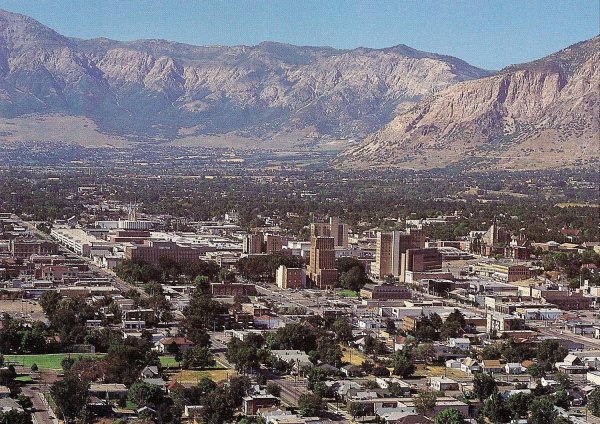

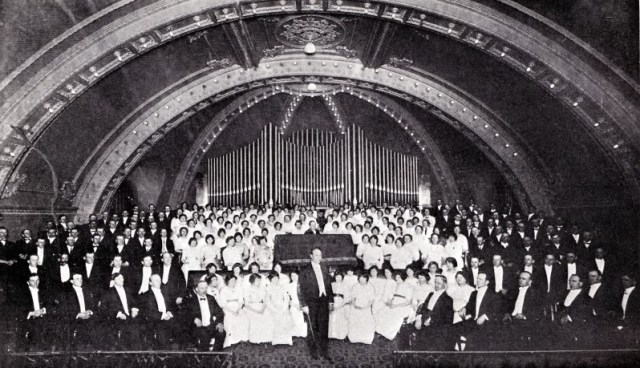
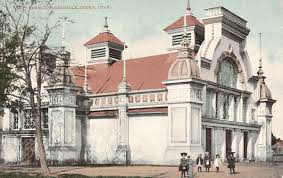
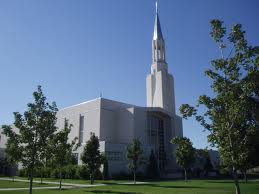


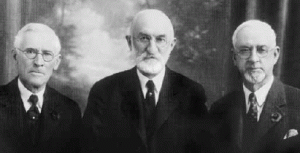
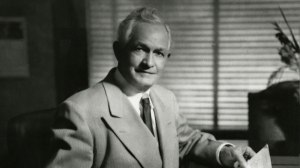

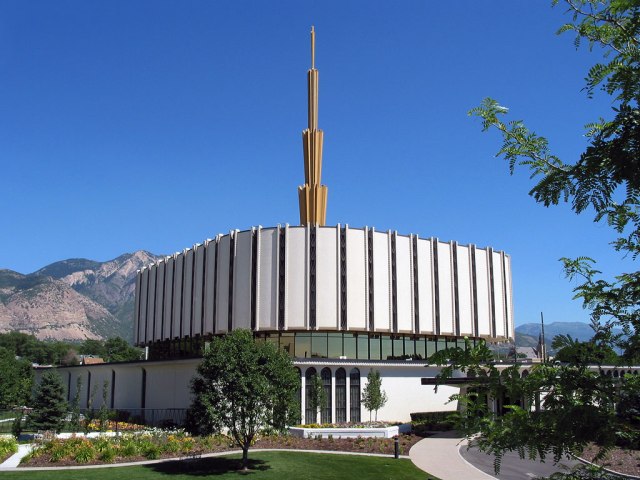

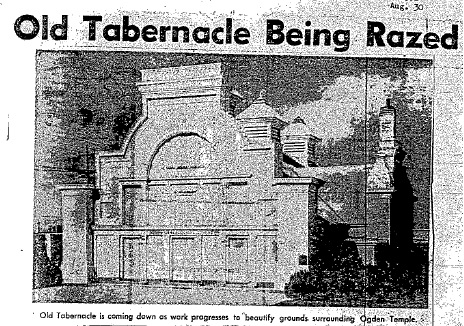
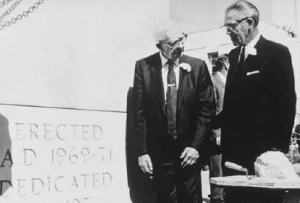
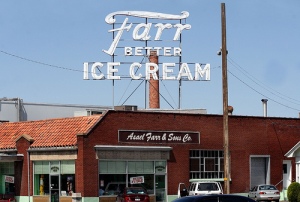
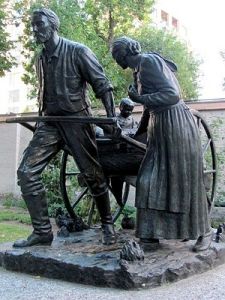

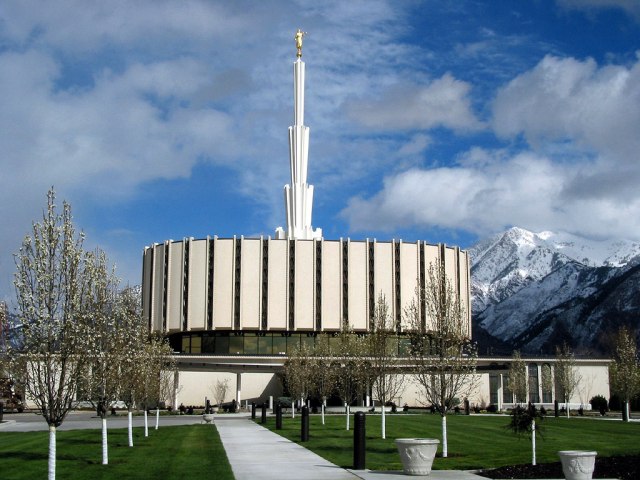
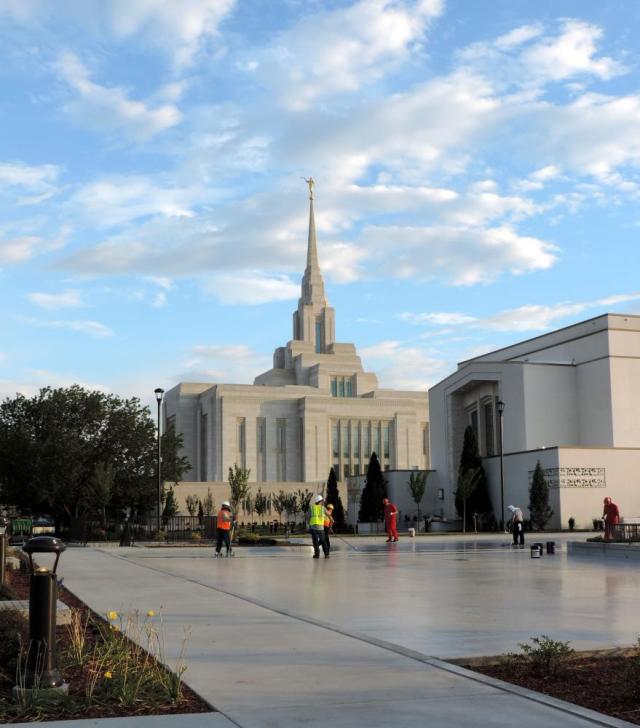
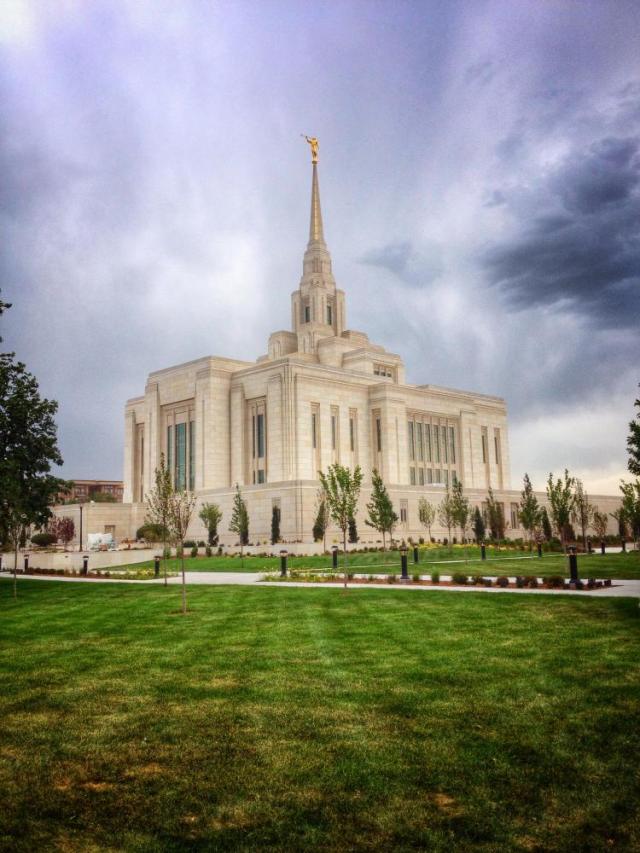

Thank you so much for writing and compiling this! I came across it while searching for a FHE lesson for tonight. I found it fascinating reading and learned a great deal not just about the Ogden Temple but about all that goes into temple construction and sites and the planning and opposition etc – overwhelming! This is truly the Lord’s work. Thank you too for the quotes and the photographs!
Thank you for enjoying it!
I have been doing some research into the purported symbolism of the pillar of cloud/fire. I received the following as a request for further information from the Church Library:
I checked the collection you referenced and there was no mention of they symbolism. The records did include a lot of detail about how Emil planned the layout and features of the temple, but no mention of any symbolism of the cloud and fire. I also checked with one of our historic sites experts, and she said that to the best of her knowledge, the idea of that symbolism didn’t come from Fetzer.
*******
I also found a quote from an individual who claimed to have interviewed Fetzer for a thesis at BYU. She said he detested the prevalent rumor that the symbolism was intentional.
Read this when looking to see the current Ogden Temple appearance/design knowing it was (and that is certainly past tense) Provo’s twin; and the Provo Temple is announced to be renovated. Wow! Am hoping the “other” reasons than cosmetics cited for Ogden do not apply to Provo. It would be heartbreaking to see such transformation of the temple where we were married, so many BYU alumni were married/sealed, and where so many missionaries served or were first endowed while at the MTC. It seems a little trivial, but my temple envelope (my wife’s, too) is embroidered with the Provo Temple design, work done by my now passed mother-in-law; though, this we’d keep anyway.
Whether the intended design was inspired by the pillar of fire/cloud or not, it is beautiful symbolism of what the temple represents in our lives as a protection and a guide. If it wasn’t a planned intention, I’d be happy thinking God worked that in without the architects realizing it. 😉
If you attend the new Ogden temple and pay careful attention. You can still see the shape and likeness of the old Ogden temple design in many many places around the temple. I realized this recently and it just melted my heart. I no longer miss it, because it’s there with me every time I go.
The history of how it came to be and why it was built the way it was, is worth knowing and sharing at least as much as the renovation was worth doing for the sake of the community and the city. I will always cherish what I know of it’s memory.